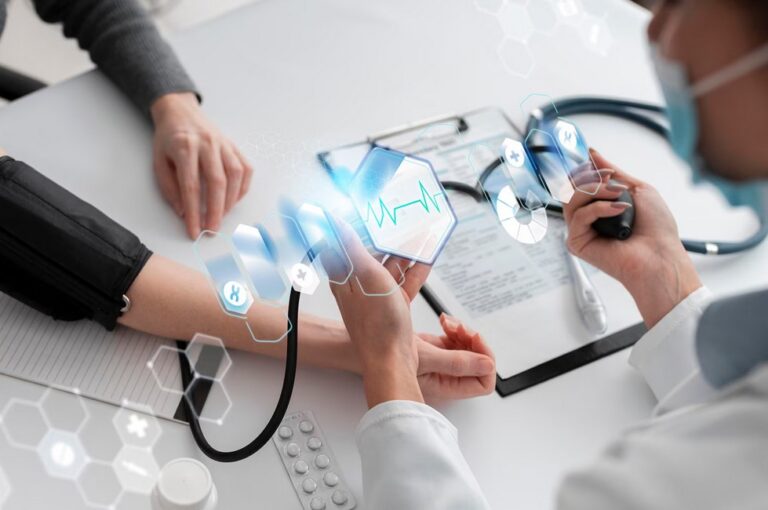The Validated Translation Process for Life Sciences.
Our lifecycle approach ensures accuracy, compliance, and patient safety for your regulated documents.
Don’t just translate words; validate your process. We deliver accurate linguistic assets, so your team can focus on what matters most.
Our translation review process is a multi-layered system designed for regulatory compliance and scientific accuracy. We ensure every document is a trusted asset.
We use a rigorous TEP process for life science documents, employing subject-matter experts to eliminate errors and ensure absolute precision from start to finish.
Our life science translation workflow integrates directly with your team’s expertise, ensuring a collaborative and transparent project from kick-off to final delivery.
The Essential Full Steps Guide to Flawless Life Science Translation.
Abstract
When a single mistranslation can jeopardize patient safety and regulatory approval, simply translating a document isn’t enough. You need a validated process. This article introduces the «Validation Lifecycle,» a comprehensive life science translation workflow that goes beyond a simple word-for-word conversion. We’ll break down the five critical phases of our proven medical translation process, from strategic kickoff to final knowledge management. By framing our work as a rigorous, integrated lifecycle, we aim to demonstrate why our methodology is designed to reduce risk, ensure compliance, and generate the accurate linguistic assets essential for your clinical and commercial success.
Beyond Translation, It’s About Validation.
In the world of life sciences—be it pharmaceuticals, medical devices, or clinical research—precision isn’t a luxury; it’s a requirement. The stakes are simply too high. When a document can impact a clinical trial’s outcome or an application for regulatory approval, you need more than a skilled life science translator; you need a system you can trust.
This is why we don’t just «translate.» We manage a life science translation workflow designed to mirror the same level of rigor and control found in your own development pipelines. Think of it as a validation lifecycle, a systematic approach that ensures every translated document is an accurate, compliant, and reliable asset, ready for regulatory scrutiny. This isn’t just about moving words from one language to another; it’s about generating a validated linguistic asset that will serve your project for years to come.
This article breaks down the steps in clinical trial translation and other regulated projects, offering a transparent look into how we ensure every document is a trusted asset. By the end, you will understand the critical difference between a simple translation and a truly validated process.
The 5-Phase Breakdown.
Our validated medical translation process is built on five distinct phases. Each phase is a critical checkpoint, designed to build upon the previous one, ultimately delivering a final product that is both accurate and compliant.
Phase 1: Discovery & Strategic Kick-Off (The Foundation).
A robust life science translation workflow begins long before the first word is translated. This initial phase sets the stage for the entire project, ensuring that our team is aligned with your specific needs, regulatory environment, and long-term goals. We demonstrate proactivity and strategic thinking, going far beyond just receiving a file and asking for a deadline.
This is where the trust-building begins, as we dive deep into the specific requirements of your project. Here are the key steps we take:
H4: Regulatory Landscape Analysis Every market has its own rules. We begin by determining the target market requirements, whether it’s the FDA in the United States, the EMA in Europe, or other regional regulatory bodies. Understanding these regulations from the outset is a critical step in building a compliant medical translation process.
H4: Glossary & Style Guide Development Consistency is a cornerstone of quality in life sciences. We work with you to create a specific terminology glossary and style guide. For new clients, we’ll build this from scratch based on your existing materials. For established clients, we will validate and refine your current terminology, ensuring every key term—from «adverse event» to «pharmacokinetics»—is translated consistently across all documents. This is a major trust-builder and an essential component of the linguistic validation process.
Resource Allocation The right linguist for the right job is paramount.
We don’t just assign a translator who knows the language; we assign one with specific subject matter expertise. For a document on a cardiac device, we’ll use a translator with a background in cardiology. For a complex pharmaceutical protocol, we’ll use a life science translator with expertise in pharmacology. This meticulous resource selection is a key part of our clinical trial translation services.
Tool Configuration Behind the scenes, we set up our CAT (Computer-Assisted Translation) tools and configure your Translation Memory (TM) to ensure consistency and efficiency. This technology not only speeds up the process but also guarantees that your specific terminology and previously translated phrases are applied consistently throughout the entire project.
This strategic kickoff phase ensures that your project is built on a solid foundation, minimizing the risk of errors and rework down the line. It’s an investment in a validated translation and localization process that pays dividends in accuracy and compliance.
The Foundation of a Reliable Process.
Discovery and Strategic Kick-off for Success.
Our medical translation process begins with a strategic analysis of your regulatory and linguistic needs. We prepare your project for a flawless execution.

Phase 2: Linguistic Execution – The Core TEP Process (The Engine).
This is the heart of the medical translation process—where the actual linguistic work takes place. But for a regulated industry like life sciences, this is not a one-person job. We utilize the renowned TEP process (Translate, Edit, Proofread), but with a life science-specific methodology that ensures the highest standards of quality.
H4: Translation by Dual-Vetted Experts The first step is the translation itself, performed by an expert who is not only fluent in both the source and target languages but is also thoroughly vetted for their life science credentials. Our translators have a proven track record of working with complex medical document translation and understand the nuances of the field.
H4: In-Country Editing The translated text is then handed over to a second, equally qualified subject-matter expert who acts as the editor. This individual performs a comprehensive review, checking for accuracy, proper terminology, and regulatory nuance. This is the first critical layer of our translation review process, ensuring that the document is not only linguistically correct but also technically sound for the target market.
H4: Proofreading by a Fresh Pair of Eyes Finally, a third linguist, a native speaker, performs a proofread. This final check focuses on the visual and structural aspects of the document—formatting, punctuation, and completeness. This step ensures that the document is clean, professional, and ready for presentation.
This meticulous three-step approach is the engine of our life science translation workflow, ensuring that the document is thoroughly reviewed and refined by multiple experts before it ever reaches you.
The Critical Translation Review Process.
This is where our methodology truly stands apart. Many translation providers stop at the TEP process, but we know that for high-stakes projects, collaboration is key. This phase highlights a sophisticated translation review process that involves your own team, showing that we don’t work in a silo. We consider your internal experts to be part of the quality assurance process.
Phase 3: Specialist Review & Client Collaboration (The Critical Checkpoint).
For projects such as clinical trial protocols, informed consent forms, and regulatory submissions, client feedback is not just a courtesy—it’s a critical component of quality assurance in translation. This phase is a key differentiator, demonstrating that we are a true partner.
H4: In-Country Medical Reviewer (ICMR) Feedback Once our TEP process is complete, the translated text is reviewed by your own in-country medical expert (ICMR). This individual provides feedback, ensuring the terminology and phrasing align with your company’s internal standards and the specific requirements of the local market. This step is particularly crucial for the steps in clinical trial translation, where ensuring comprehension at the clinical site is paramount.
H4: Collaborative Feedback Integration Our team doesn’t just receive feedback; we work with your ICMR to resolve queries and finalize the wording. We discuss suggestions, justify our linguistic choices, and incorporate changes where necessary. This demonstrates a true partnership and respect for the client’s ultimate authority over their content.
This collaborative step ensures that the final document is not just accurate from a linguistic standpoint, but also perfectly aligned with your internal processes and validated by your own experts. For more information on how a collaborative approach can de-risk your projects, please visit our professional translation services page.
Phase 4: Quality Control & Verification (The Safety Net).
Once the linguistic and client reviews are complete, we don’t just deliver the file. This is our «zero-defect» phase, a final safety net where we perform technical and compliance checks that go beyond linguistics. This step ensures that the document is perfect in every technical detail.
H4: Formatting & Layout Verification We meticulously compare the translated document to the original source file. Whether it’s a PDF, a Word document, or a complex InDesign file, we ensure that the layout, font, and spacing are identical. This is especially important for patient-facing materials and regulatory documents where visual consistency is essential.
Functional Checks For e-learning modules, software UI, or other interactive content, we perform functional checks to verify that buttons work, text fits within character limits, and the user interface functions as intended.
Final Compliance Check A senior project manager signs off on the entire project, confirming that all steps in our Quality Management System (like ISO 13485) have been followed. This final check ensures every detail, from file name to final formatting, is correct. This is a critical piece of our quality assurance in translation process.
This two-phase review system—the collaborative review with the client and our final internal QC—ensures a level of quality and compliance that you won’t find with most translation providers.
Phase 5: Delivery, Archival, & Knowledge Management (The Living Legacy).
Our responsibility doesn’t end when the translated document is delivered. The final phase of the validation lifecycle is about building a long-term partnership and ensuring that every project contributes to future success.
Secure Delivery All project files are delivered via encrypted, secure channels to protect your sensitive data.
Translation Memory & Glossary Updates Every project enhances your personalized linguistic database. We update your Translation Memory and glossary with the final, approved content, saving you time and money on future projects while guaranteeing consistency. This is a cornerstone of our service as a certified medical translation provider, ensuring that your corporate terminology is always up to date.
Secure Archival We securely archive all project files, maintaining a comprehensive audit trail as required by regulatory bodies. This provides a clear, documented record of our entire process, ready for any future compliance review.
This final phase transforms a one-time project into a living legacy of linguistic assets, making your medical document translation smoother and more consistent over time.
The Outcome is Trust.
Our rigorous life science translation workflow exists for one reason: to de-risk your regulatory submissions, accelerate your time-to-market, and protect patient safety.
We understand that a medical device translation or a clinical trial protocol is more than just a document—it’s a critical component of your core business. Our medical translation process isn’t a theoretical model; it’s our standard operating procedure, underpinned by industry-specific certifications and years of experience. For more on our capabilities in this space, visit our life science translation services page.
Ultimately, our process is designed to give you one thing: peace of mind. You can trust that the translated documents you receive are accurate, compliant, and have been through a rigorous validation lifecycle.
Final Call to Action.
Now that you’ve seen our proven approach, what’s the next step in clinical trial translation or any other regulated project? Don’t just get a quote; start a conversation about a process that works for you.
Schedule a complimentary workflow analysis to see how our process integrates seamlessly with yours.
The Engine of Our TEP Process.
Our expert life science translator team is at the heart of our operations. They ensure every word is not just translated, but validated for scientific accuracy.

Navigating the Nuances of Life Science Translation: FAQs and Best Practices.
As we’ve outlined our comprehensive «Validation Lifecycle,» it’s worth exploring some of the most common questions and challenges clients face when dealing with complex life science translation workflow. Understanding these nuances can help you better manage your projects and select the right partner.
What Are the Essential Steps in Clinical Trial Translation?
A clinical trial protocol isn’t just a document; it’s the blueprint for a scientific study, and its translation requires meticulous attention to detail. Beyond the core TEP process, steps in clinical trial translation include several critical components that ensure linguistic and scientific accuracy.
- Linguistic Validation: This goes beyond simple translation. For patient-reported outcomes (PROs), it’s a rigorous, multi-step process that ensures a translated questionnaire is conceptually and culturally equivalent to the original.
- Back-Translation: This involves translating the target language document back into the source language by a third-party translator. It’s a key step in our translation review process for high-risk documents, serving as a quality check to identify any misunderstandings or inaccuracies.
- In-Country Review (ICR): As we mentioned, this is a non-negotiable step. Your in-country expert provides the final sign-off, ensuring that the terminology and tone resonate with local regulatory and clinical audiences.
- TEP Process for Life Science Documents: While TEP is a standard process, for life sciences, it’s performed by a team of subject-matter experts. For instance, a protocol for a cardiology study is translated, edited, and proofread by linguists with backgrounds in cardiology, not just general medical knowledge. This is a critical distinction that ensures a deeper level of accuracy.
The Role of Technology and the Life Science Translator.
In today’s fast-paced world, technology is an indispensable part of any life science translation workflow. However, it’s a tool, not a replacement for human expertise. Here’s how we use technology to enhance our process while keeping human intelligence at the forefront.
Computer-Assisted Translation (CAT) Tools CAT tools are central to our medical translation process.
They allow our linguists to work more efficiently and consistently. They do not, however, perform the translation themselves. Instead, they provide a repository of previously translated segments (Translation Memory) and a glossary of approved terms. This ensures that a term like «adverse event» is translated identically across every document for a given client, which is vital for regulatory compliance.
Translation Memory (TM) A TM is a database that stores every sentence and phrase that has been translated for your projects.
Every time we translate a new document, the TM scans it for matches. This not only speeds up the process but also guarantees consistency. Think of it as a living, breathing style guide that gets smarter with every project. For example, if you have a series of similar clinical trial protocols, the TM will pull in the previously translated segments, saving time and money while maintaining total consistency.
Terminology Management In life science translation, getting the terminology right is non-negotiable.
Our terminology management tools are integrated with our CAT tools to ensure that your specific glossary of terms is applied consistently by every linguist on every project. This prevents the confusion that can arise when different linguists use different terms for the same concept, which can be a major issue in clinical or regulatory settings.
The Human Factor in Certified Medical Translation While technology is a powerful enabler, it is the life science translator who brings the process to life. Our linguists are not just language experts; they are subject-matter experts. They have degrees in pharmacology, biology, medicine, and other life science fields. It is this combination of linguistic skill and scientific knowledge that elevates a simple translation to a certified medical translation. Their expertise allows them to understand the scientific context, interpret complex concepts, and choose the most accurate terminology, especially when faced with nuances that a machine simply cannot grasp.
Managing a Complex Translation Project for Pharmaceuticals.
A pharmaceutical project often involves a vast number of documents, from clinical trial protocols and patient diaries to marketing materials and regulatory submissions. Managing such a complex undertaking requires a systematic approach that ensures every piece of the puzzle is handled with care.
Linguistic Validation Process For patient-facing materials, such as patient-reported outcomes (PROs), the linguistic validation process is paramount. This involves more than just a direct translation. It includes a forward translation, a review, a back-translation, and cognitive debriefing with native speakers to ensure the concepts are culturally appropriate and understood as intended. This process is a critical part of our life science translation workflow to ensure the integrity of your data.
Quality Assurance in Translation Our commitment to quality extends beyond the TEP process.
We have a robust quality assurance in translation framework that includes automated checks for formatting and terminology, as well as manual checks by a project manager. This is a final safety net to ensure every detail is correct before delivery.
What Is Involved in the Translation Review Process?
Many people assume a review is a simple proofread. In our medical translation process, the translation review process is a multi-layered check designed to catch every type of error, from linguistic to technical to cultural.
The Dual-Layered Review Our process includes two distinct review phases:
- Linguistic Review: This is the editing and proofreading steps of the TEP process, where a second and third linguist review the document for accuracy and consistency.
- Specialist Review: This involves the client’s in-country expert, who provides feedback based on their local knowledge and regulatory expertise. This is the ultimate checkpoint for compliance and accuracy.
This dual-layered approach is the foundation of our translation review process and a key reason why we can stand by the quality of our work.
The Importance of In-Country Review (ICR).
The in-country review (ICR) is perhaps the most critical component of our validation lifecycle. Without it, even a perfect translation can fail. A phrase that is technically correct may not be culturally appropriate or align with local regulatory nuances. The ICR ensures that your documents are not only linguistically sound but also market-ready and compliant with local regulations.
This proactive approach is what allows us to confidently manage complex translation and localization processes, ensuring your documents are fit for purpose in any market. The medical document translation for a clinical trial in Germany, for example, will be reviewed by a German medical expert to ensure all terminology is aligned with local standards.
Best Practices for a Streamlined Life Science Translation Workflow.
A great life science translation workflow isn’t just about what you do, but how you do it. By adopting certain best practices, you can make the entire medical translation process more efficient, cost-effective, and accurate. These practices, furthermore, ensure that your projects run smoothly and remain compliant from start to finish.
The Power of Proactive Communication.
Effective communication is the lifeblood of a successful medical document translation project. We work in close partnership with your team, from project managers to subject-matter experts, to ensure a seamless flow of information. This includes:
- Clear Briefings: Before starting, we hold a strategic kick-off meeting to understand your specific needs, timelines, and any potential challenges.
- Transparent Reporting: We provide regular updates on project status, allowing you to track progress and plan your internal workflows accordingly.
- Timely Feedback Loops: We establish clear channels for feedback, especially during the translation review process, to ensure your input is incorporated efficiently.
By maintaining open lines of communication, we can resolve potential issues before they become problems and ensure that your project stays on track.
Leveraging Technology for Consistency and Efficiency.
We’ve already discussed the role of CAT tools and Translation Memory (TM), but their full potential is unlocked when used strategically. These tools are the foundation of our life science translation workflow and help us achieve unparalleled consistency and efficiency.
- Centralized Terminology Management: Maintaining a centralized glossary is not just a best practice; it’s a necessity for certified medical translation. It ensures that every linguist uses the same approved terms, which is critical for quality assurance in translation and regulatory compliance.
- Building a Reusable Translation Memory: Every project contributes to a growing TM, which becomes a valuable asset for your company. Over time, it helps reduce translation costs and shortens turnaround times, as we can reuse previously translated content.
- Automated Quality Checks: Our tools perform automated checks for terminology consistency, grammar, and formatting, catching errors before they ever reach our human reviewers.
This intelligent use of technology allows our human experts to focus on the linguistic and scientific nuances that only they can address.
Your Validated Linguistic Asset.
Beyond Translation, It’s About Validation.


A Systematic Approach for Medical Translation Process.
Understanding the TEP Process for Life Science Documents.
The TEP (Translate, Edit, Proofread) process is the gold standard in the industry, and it forms the core of our medical translation process. However, for life sciences, we apply an extra layer of rigor to each step.
- Translation: Performed by a specialist in the relevant scientific field, ensuring technical accuracy from the very beginning. For example, a document on a new oncology drug is translated by a life science translator with a background in oncology.
- Editing: A second subject-matter expert reviews the translation against the source text. This step is crucial for ensuring that no nuance or critical detail has been lost. It’s a key part of our translation review process and the primary safeguard against inaccuracies.
- Proofreading: A final linguist reviews the document for formatting, grammar, and punctuation, ensuring it is polished and presentation-ready.
This three-tiered approach provides multiple levels of quality assurance in translation, reducing the risk of errors to a minimum.
Why a Validated Process Matters for Your Regulatory Success.
For organizations dealing with regulatory bodies like the FDA or EMA, a haphazard translation and localization process is a non-starter. Regulators require not only accurate documents but also a traceable, validated process that ensures compliance. Our life science translation workflow is designed with this in mind. Every step, from the initial regulatory analysis to final archival, is documented and auditable, giving you the peace of mind that your translated documents will withstand regulatory scrutiny.
- Audit Trails: We maintain a full audit trail for every project, documenting every change, every review, and every sign-off. This is a critical component of our quality assurance in translation and a necessity for regulated industries.
- ISO Certifications: Our processes are often underpinned by certifications such as ISO 17100 and ISO 13485, which demonstrate our commitment to quality and consistency. For a deeper look into how our expertise can benefit your specific projects, you can visit our dedicated life science translation services page.
How to Ensure Quality in Medical Translation.
How to ensure quality in medical translation is a question that every professional in the field should ask. It goes beyond a simple check for spelling and grammar. It involves a holistic approach that integrates a number of best practices.
- Specialist Linguists: The foundation of quality is using linguists with subject-matter expertise.
- The TEP Process: A rigorous TEP process is non-negotiable for high-stakes documents.
- In-Country Review: The final, essential check for cultural and regulatory compliance.
- Technology: Using CAT tools, TM, and terminology management to ensure consistency and efficiency.
- Client Collaboration: Working as a partner, not just a vendor, to ensure the final product meets your specific needs.
By following these best practices, we ensure that every medical document translation we deliver is not only accurate but also fit for purpose, regardless of the target market or regulatory environment.
The Essential Role of Technology in the Modern Translation Process.
While human expertise remains the cornerstone of our medical translation process, technology acts as an essential enabler, a powerful assistant that enhances quality, efficiency, and consistency. Our life science translation workflow leverages a suite of intelligent tools to streamline every phase of the project, from initial setup to final delivery. Whereas traditional translation relied solely on manual effort, our process integrates technology to create a more robust and reliable system.
CAT Tools: More Than Just Spellcheck.
Computer-Assisted Translation (CAT) tools are a fundamental part of our approach. But what exactly are they? They are software programs that provide a dedicated environment for professional translators. They do not automatically translate text like free online tools. Instead, they store a repository of previously translated content and approved terminology, which greatly benefits our translation and localization process.
- Segment-Based Translation: CAT tools break down a document into individual sentences or segments. This allows the translator to work on one segment at a time, ensuring that the source and target texts are aligned perfectly.
- Leveraging Translation Memory (TM): As a translator works, every translated segment is stored in a Translation Memory. When a new document is loaded, the CAT tool automatically identifies and suggests translations for any identical or similar segments. This is particularly valuable in clinical trial translation, where protocols and other documents often contain repetitive phrases and clauses. The TM saves time and, perhaps more importantly, ensures that the same phrases are translated identically every time.
- Consistency and Terminology: The greatest benefit of CAT tools in a life science translation workflow is their ability to enforce consistency. They are linked to our Terminology Management systems, alerting the translator if they use a term that is not on the client’s pre-approved glossary. This is a critical piece of the puzzle for quality assurance in translation.
Linguistic Validation Process for Patient-Facing Content.
For any medical document translation that will be seen by patients—such as informed consent forms, patient diaries, or quality of life questionnaires—the linguistic validation process is non-negotiable. This is a highly specialized workflow designed to ensure that the translated material is conceptually and culturally equivalent to the source, and that patients can easily understand it.
- Forward and Back-Translation: The document is first translated into the target language by one or two independent translators (Forward Translation). It is then translated back into the source language by a different translator who has not seen the original document (Back-Translation). By comparing the original and back-translated texts, we can identify any discrepancies and refine the forward translation.
- Cognitive Debriefing: This is a key step where we test the translated document with a small group of native speakers from the target population. We ask them to explain what they understand from the questions and instructions to ensure clarity and cultural appropriateness. This feedback is then used to make final adjustments to the document. This meticulous process ensures that the data collected from patients will be reliable and valid across different cultures and languages.
Addressing the Challenges of Complex Projects.
Managing a complex translation project for pharmaceuticals or medical devices requires a robust methodology that can handle a high volume of documents, multiple languages, and a wide range of subject matter. Here’s how our «Validation Lifecycle» is specifically designed to meet these challenges.
- Scalable Resource Allocation: For large projects, we assemble a dedicated team of life science translator experts. This team is chosen not only for their language skills but also for their specific knowledge in areas like oncology, cardiology, or infectious diseases. This ensures that every document, from a patient diary to a detailed summary of product characteristics (SmPC), is handled by the most qualified expert.
- Centralized Project Management: A single project manager oversees the entire workflow, acting as your primary point of contact. They are responsible for coordinating the linguists, managing timelines, and ensuring that every step of our medical translation process is followed meticulously. They also serve as the link for your in-country experts during the translation review process.
- Robust Quality Control: Our multi-layered quality control system is essential for complex projects. We integrate both automated and human checks, from the initial TEP process to the final functional checks for e-learning or software UI content. This ensures a “zero-defect” approach, where every file is verified for accuracy and compliance.
By systematically addressing these challenges, our validated life science translation workflow provides a clear roadmap for success, no matter the size or complexity of your project.
The Benefits of a Proactive and Collaborative Approach.
Rather than seeing ourselves as a simple service provider, we see ourselves as an extension of your team. This collaborative approach is a key part of our translation and localization process. When we partner with a client, we don’t just receive files; we engage in a discussion about your goals, challenges, and specific requirements.
- Strategic Kick-off: Our initial discovery phase, which we discussed earlier, is a perfect example. We take the time to analyze the regulatory landscape, build a custom glossary, and assemble a dedicated team. This proactive approach saves time and money down the line, as it prevents errors and ensures that all parties are aligned from the very start.
- The In-Country Review (ICR): Our emphasis on the in-country review (ICR) is another example of our collaborative philosophy. We respect that you have internal experts who are the ultimate authority on your content. By integrating their feedback into our workflow, we ensure that the final document is not only linguistically accurate but also culturally and contextually perfect. This is a hallmark of a mature translation review process.
This partnership model is what separates a simple translation service from a validated life science translation workflow that truly delivers value and reduces risk.
Your Partner in Compliance.
The Critical Translation Review Process.
We don’t just deliver files. Our collaborative translation review process includes your in-country experts, making sure every document is compliant and approved.
The Unspoken Language of Compliance: ISO Standards and Certified Medical Translation.
In the life science industry, a certified medical translation isn’t just a promise; it’s a verifiable commitment to quality. This commitment is often demonstrated through adherence to international standards and certifications. Our life science translation workflow is built upon a foundation of established quality management systems, ensuring that every step of our process is not only effective but also fully auditable. This focus on compliance is what sets a professional service apart and gives you confidence that your translated documents will meet the rigorous demands of regulatory bodies.
ISO 17100: The Standard for Translation Quality.
ISO 17100 is the international standard that sets the requirements for the core medical translation process. It specifies requirements for all aspects of the process directly affecting the quality and delivery of translation services. Its primary focus is on the TEP (Translate, Edit, Proofread) process, the qualifications of the linguists, and the technical resources used.
- Linguist Qualifications: This standard mandates that linguists must have a specific set of qualifications, including a recognized graduate-level qualification in translation, or a combination of translation experience and education in a subject matter area. This ensures that a life science translator isn’t just fluent in a language but is also a trained professional in the craft of translation.
- The TEP Process: ISO 17100 requires a mandatory two-step linguistic review: a translation by a qualified linguist, followed by a full review by a second independent expert. This is the bedrock of our translation review process and a key component of our quality assurance in translation.
ISO 13485: The Gold Standard for Medical Devices.
For organizations involved in medical devices, ISO 13485 is a critical standard. It specifies requirements for a quality management system where an organization needs to demonstrate its ability to provide medical devices and related services that consistently meet customer and regulatory requirements. Our life science translation workflow for medical device clients is built to be fully compliant with this standard.
- Traceability and Documentation: ISO 13485 places a strong emphasis on traceability. Every translated document, from a user manual to a regulatory submission, must have a clear, documented history. We maintain a comprehensive audit trail for every project, logging every change and every review. This is essential for a compliant medical document translation.
- Risk Management: The standard requires organizations to identify and manage risks throughout the product lifecycle. In the context of translation, this means we identify potential risks, such as mistranslations that could impact patient safety, and implement measures to mitigate them, such as the multi-layered translation review process and the use of subject-matter experts.
Navigating the Global Landscape: Translation and Localization Process.
The world of life sciences is inherently global, and so is the need for a sophisticated translation and localization process. While translation focuses on the linguistic conversion of text, localization adapts the content to meet the specific cultural, regulatory, and technical requirements of a target market. This is particularly important for patient-facing content and software.
- Cultural Adaptation: A phrase or an image that works in one culture may be confusing or even offensive in another. Localization ensures that content is culturally appropriate. For example, the use of certain colors, symbols, or even metaphors may need to be adjusted in a clinical trial translation intended for a different cultural audience.
- Technical and Regulatory Compliance: Localization goes beyond words. It involves adapting units of measurement, date formats, and currencies. Furthermore, it ensures that the translated content complies with local regulatory requirements, which may differ significantly from one country to another. For a translation and localization process to be successful, it must account for these numerous variables.
Why a TEP Process for Life Science Documents is Non-Negotiable.
We have repeatedly mentioned the TEP (Translate, Edit, Proofread) process, but it’s worth reiterating why, for life science translation, it is absolutely non-negotiable. A document that has only been translated by a single individual, no matter how skilled, is a liability. The potential for a single-word error to cause significant harm is too great.
The three-step TEP process serves as an ironclad guarantee of quality assurance in translation. The first translator captures the meaning and context, the second editor refines the text for accuracy and consistency, and the third proofreader catches any final errors in formatting or grammar. For high-stakes documents, such as a medical document translation for a clinical trial, we often recommend a fourth step: the in-country review (ICR) by a client-appointed expert.
The Value of In-Country Review (ICR).
The in-country review (ICR) is a crucial, final safeguard in our life science translation workflow. It’s the last step before a document is finalized and submitted to a regulator or released to the public. It ensures that the document is not only linguistically sound but also fully compliant with local regulations and cultural norms. The ICR also serves as an important bridge between our translation team and your on-the-ground experts. This final collaborative check helps us fine-tune terminology, ensure local relevance, and catch any final nuances that might have been missed. The value of this step cannot be overstated, especially for steps in clinical trial translation where the integrity of patient data is paramount.
FAQs: Getting to the Heart of the Matter.
Now that we have walked through our «Validation Lifecycle,» let’s answer some common questions that arise from organizations looking to improve their life science translation workflow.
What are the steps to translate a clinical trial protocol?
Translating a clinical trial protocol involves a highly specialized medical translation process that goes well beyond a simple language swap. The steps in clinical trial translation are:
- Strategic Kick-Off: The project begins with a deep dive into the regulatory requirements of the target markets (e.g., FDA, EMA). We also build a custom glossary to ensure consistent terminology for critical terms.
- Specialized TEP Process: The protocol is translated by a life science translator with expertise in the relevant medical field (e.g., oncology, cardiology). This is followed by a thorough edit and a final proofread by two other expert linguists.
- In-Country Medical Review: The translated protocol is then reviewed by the client’s own in-country medical expert. This crucial translation review process ensures that the document is not only linguistically accurate but also compliant with local regulations and accepted clinical practice.
- Final Quality Control: Before delivery, a project manager performs a final check for formatting, completeness, and adherence to all a predefined life science translation workflow to ensure the document is ready for submission.
How to ensure quality in medical translation?
Ensuring quality assurance in translation is not a single action but a comprehensive, multi-layered approach. The key principles are:
- Subject-Matter Experts: Use linguists with verifiable scientific or medical credentials, not just language skills.
- Multi-Step Review: Implement a rigorous TEP process for life science documents that involves multiple expert reviewers.
- In-Country Review: Always have a local expert review the final document to ensure regulatory and cultural compliance.
- Robust Technology: Leverage CAT tools and Translation Memory to maintain terminology consistency and efficiency.
- Clear Documentation: Maintain a full audit trail of the entire medical document translation process to ensure traceability and accountability.
What is involved in the translation review process?
The translation review process is a cornerstone of our life science translation workflow. It is a systematic, multi-layered check designed to eliminate errors and ensure accuracy. It involves:
- Editing: A second, equally qualified linguist reviews the translation against the source document, focusing on accuracy, terminology, and regulatory nuance.
- Proofreading: A third linguist performs a final review for grammar, spelling, and formatting.
- In-Country Review (ICR): A client’s in-country medical professional provides the final, essential sign-off on the content, ensuring it is fit for the local market.
The Final Word: The Outcome is Trust.
The world of life sciences is defined by precision, and so is our medical translation process. We have created a validated translation and localization process that mirrors the rigor of your own industry. Our «Validation Lifecycle» is a systematic, auditable, and repeatable framework that ensures every translated document is a reliable asset. This is our promise to you: we don’t just move words; we generate trust. We have a robust quality assurance in translation framework that is ready to serve your needs.
Our certified medical translation services are designed to de-risk your regulatory submissions, accelerate your time-to-market, and, most importantly, protect patient safety. Our life science translator teams are ready to get to work.
Final Call to Action
You’ve seen the rigor of our process. Now, let’s put it to work for you. Don’t simply get a quote; schedule a consultation to see how our validated workflow can integrate with your own.
Schedule a complimentary workflow analysis to see how our process integrates with yours.
Your Living Linguistic Legacy.
Delivery, Archival, and Knowledge Management.
: We update your Translation Memory with every project. This saves you time and money on future projects, guaranteeing long-term consistency.
Get the Answers You Need.
Have questions about our process? We’ve got you covered. Check out our frequently asked questions below for quick answers to common queries.
Ready to Elevate Your Translation Workflow?
Contact us to discuss your project needs and learn how our validated life science translation workflow can help you achieve your regulatory and commercial goals.






